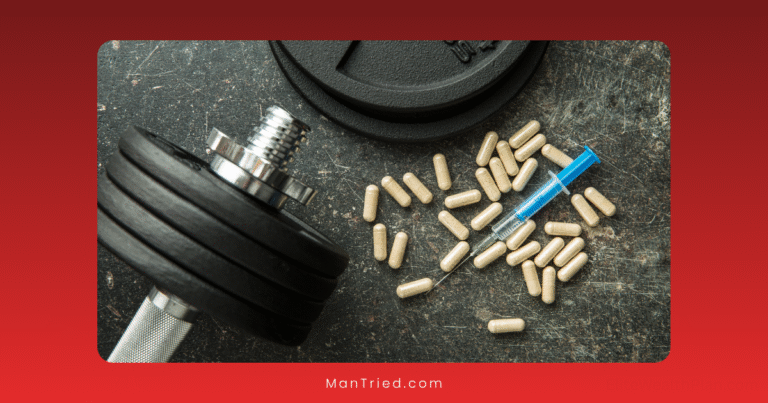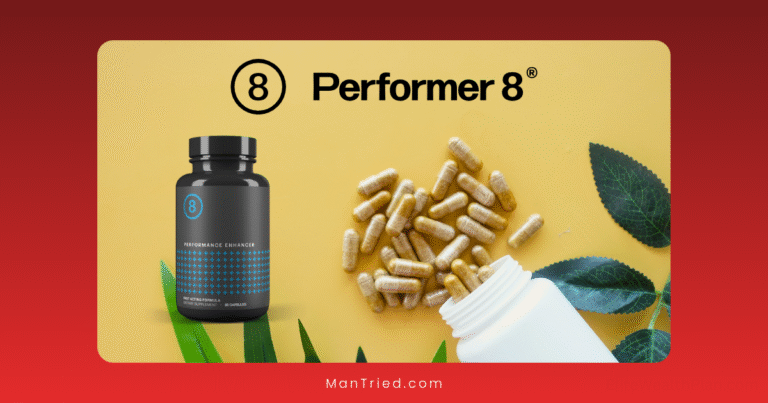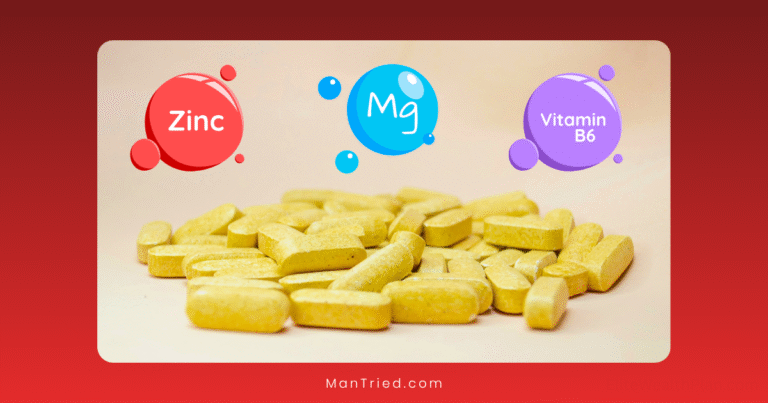Age-Specific Testosterone Support: Different Approaches for Different Decades

Testosterone, often called the cornerstone of masculine vitality, plays a crucial role in everything from muscle development and bone density to energy levels and sexual function. But testosterone isn’t a static hormone—its levels naturally fluctuate throughout a man’s life, peaking in early adulthood and gradually declining with age.
This natural trajectory means that testosterone support strategies should evolve as men move through different decades of life. What works best at 25 may not be the optimal approach at 45 or 65. In this comprehensive guide, we’ll explore age-specific approaches to testosterone support, helping you maintain optimal hormonal health no matter your stage of life.
Understanding the Natural Testosterone Timeline
Before diving into age-specific strategies, it’s important to understand how testosterone levels typically change throughout a man’s life:
- Adolescence to Early 20s: Testosterone production ramps up dramatically during puberty and typically peaks around age 19-20.
- Late 20s to Mid-30s: Levels remain relatively stable, with normal ranges for men aged 25-30 at approximately 14.3-19.9 nmol/L (413-575 ng/dL), according to Medichecks.
- Late 30s to 40s: Testosterone begins its gradual decline, typically at a rate of about 1% per year after age 30-35.
- 50s and Beyond: The decline continues, with men in their 50s typically having levels around 215-878 ng/dL. By age 70, testosterone production may be approximately 30% lower than peak levels, according to Hone Health.
According to 2025 data from Sweet Water Memorial, about a third of men over age 45 may have testosterone levels lower than what is considered normal for their age.
Now, let’s explore how to support testosterone levels effectively at each stage of life.
Testosterone Support in Your 20s: Building the Foundation
Your 20s represent a period of peak natural testosterone production. The focus during this decade should be on maintaining these naturally high levels and establishing habits that will support hormonal health for decades to come.
Key Challenges in Your 20s
- Poor lifestyle habits (irregular sleep, excessive alcohol, poor nutrition)
- Stress from career establishment and financial pressures
- Overtraining or improper exercise approaches
- Establishing work-life balance
Optimal Approaches for Your 20s
1. Exercise Strategy
In your 20s, your body is primed for building muscle and strength, which naturally supports testosterone production.
Recommended Approach:
- Resistance training: 3-4 sessions per week focusing on compound movements (squats, deadlifts, bench press, rows)
- High-intensity interval training (HIIT): 1-2 sessions per week to boost growth hormone and testosterone response
- Active recovery: Include activities like hiking, swimming, or recreational sports
Research shows that resistance training is particularly effective for boosting testosterone levels. According to Healthline, both resistance training and high-intensity interval training can significantly increase testosterone production.
2. Nutrition Strategy
Your 20s are about establishing healthy eating patterns that support hormonal health.
Recommended Approach:
- Adequate protein intake: 0.8-1g per pound of bodyweight to support muscle growth and recovery
- Healthy fats: Include sources of monounsaturated and saturated fats (olive oil, nuts, avocados, eggs)
- Micronutrient-dense foods: Focus on zinc-rich foods (oysters, beef, pumpkin seeds) and magnesium-rich foods (dark leafy greens, nuts, seeds)
- Moderate carbohydrate intake: Prioritize complex carbs and time them around workouts
- Limit alcohol consumption: Keep it to 1-2 drinks occasionally, as excessive alcohol can reduce testosterone production
3. Lifestyle Factors
Your habits in your 20s set the stage for decades to come.
Recommended Approach:
- Prioritize sleep quality: Aim for 7-9 hours of quality sleep, as testosterone production is highest during deep sleep
- Stress management: Establish effective stress-reduction techniques (meditation, breathwork, hobbies)
- Limit environmental toxin exposure: Minimize contact with BPA plastics and other endocrine-disrupting chemicals
- Regular health check-ups: Begin monitoring testosterone levels in your late 20s as a baseline
4. Supplement Considerations
For most men in their 20s, extensive supplementation isn’t necessary if diet and lifestyle are optimized. However, certain supplements may provide additional support:
Recommended Approach:
- Vitamin D: If levels are low (common even in young men)
- Zinc: Particularly if your diet is low in zinc-rich foods or you’re an athlete who sweats heavily
- Magnesium: Supports sleep quality and recovery
- Omega-3 fatty acids: For overall hormonal health and inflammation management
The focus in your 20s should be on establishing a strong foundation through lifestyle rather than relying heavily on supplements.
Testosterone Support in Your 30s: Maintaining Momentum
Your 30s often bring increased career responsibilities, family obligations, and lifestyle changes that can impact hormonal health. This decade is about maintaining testosterone levels as the natural decline begins.
Key Challenges in Your 30s
- Increasing work stress and family responsibilities
- Beginning of natural testosterone decline (around 1% per year)
- Less time for exercise and recovery
- Changes in metabolism and body composition
- Sleep disruptions (often from young children or work demands)
Optimal Approaches for Your 30s
1. Exercise Strategy
With less recovery capacity and time constraints, exercise needs to be more strategic.
Recommended Approach:
- Efficient resistance training: 2-3 sessions per week focusing on compound movements and higher intensity
- Strategic cardio: Incorporate 1-2 HIIT sessions (20-30 minutes) rather than long, steady-state cardio
- Recovery focus: Include mobility work and adequate rest between intense sessions
- Consistency over perfection: Shorter, more frequent workouts are better than occasional marathon sessions
2. Nutrition Strategy
Your metabolism may begin to slow in your 30s, requiring dietary adjustments.
Recommended Approach:
- Slight calorie adjustment: Monitor body composition and adjust intake to prevent fat gain
- Continued protein emphasis: Maintain 0.8-1g per pound to support muscle preservation
- Strategic carbohydrate timing: Focus carbs around workouts and active periods
- Increased emphasis on anti-inflammatory foods: Colorful fruits and vegetables, fatty fish, nuts, and spices
- Hydration focus: Proper hydration supports overall hormone function
3. Lifestyle Factors
Balancing life demands becomes crucial in your 30s.
Recommended Approach:
- Sleep optimization: Even with time constraints, prioritize 7-8 hours of quality sleep
- Stress management techniques: Find brief but effective stress-reduction practices that fit into busy schedules
- Work-life boundaries: Establish clear boundaries to prevent chronic stress
- Regular testosterone monitoring: Begin annual or bi-annual testing to track changes
4. Supplement Considerations
As natural production begins to decline, targeted supplementation may become more beneficial.
Recommended Approach:
- Vitamin D: Continues to be important, with optimal levels between 40-60 ng/mL
- Ashwagandha: Research from 2019 showed a nearly 15% increase in testosterone after 8 weeks of supplementation, according to Healthline
- Zinc and Magnesium: Often combined as ZMA, taken before bed to support recovery and sleep
- Fenugreek: Some studies show benefits for maintaining testosterone levels
According to 2025 research, effective testosterone levels for younger men should aim for 600 to 900 ng/dL. Regular testing can help you determine if your approaches are maintaining optimal levels.
Testosterone Support in Your 40s: Strategic Intervention
The 40s represent a pivotal decade for testosterone management. The natural decline becomes more noticeable, and proactive approaches become increasingly important.
Key Challenges in Your 40s
- More pronounced testosterone decline (levels may drop to 252-916 ng/dL)
- Decreased muscle mass and increased difficulty maintaining body composition
- Reduced recovery capacity
- Increased risk of metabolic issues (insulin resistance, weight gain)
- Beginning of potential sexual function changes
- Career stress often peaks
Optimal Approaches for Your 40s
1. Exercise Strategy
Exercise remains crucial but requires more strategic implementation.
Recommended Approach:
- Resistance training with modified volume: 2-3 sessions weekly with emphasis on maintaining strength rather than constantly increasing loads
- Recovery-focused training splits: Allow more recovery between training similar muscle groups
- Joint-friendly exercise selection: Modify exercises to reduce injury risk
- Increased emphasis on mobility work: Daily mobility routines to maintain function
- Stress-reducing activities: Incorporate yoga, tai chi, or other mind-body exercises
According to WebMD, both weightlifting and high-intensity interval training remain effective for increasing testosterone levels even as men age.
2. Nutrition Strategy
Metabolic changes require dietary adjustments.
Recommended Approach:
- Increased protein intake: Up to 1-1.2g per pound of bodyweight to combat age-related muscle loss
- Emphasis on nutrient density: Focus on maximizing micronutrients rather than just macros
- Blood sugar management: Limit processed carbohydrates and focus on fiber-rich options
- Strategic fasting approaches: Consider 14-16 hour overnight fasting periods to support hormonal health
- Anti-inflammatory diet: Mediterranean-style eating patterns show benefits for hormonal health
Research from VA Whole Health indicates that maintaining ideal body weight is crucial; a one-point drop in body mass index (BMI) can increase testosterone levels by approximately one point.
3. Lifestyle Factors
Lifestyle optimization becomes increasingly important.
Recommended Approach:
- Sleep prioritization: Quality sleep becomes even more critical; consider sleep tracking
- Stress management as non-negotiable: Implement daily stress-reduction practices
- Regular health screenings: Include comprehensive hormone panels in yearly check-ups
- Limit alcohol and eliminate tobacco: Both have stronger negative impacts as you age
- Environmental toxin awareness: Minimize exposure to endocrine-disrupting chemicals
According to 2025 data from Houston Methodist, nearly 40 percent of men over 45 experience low testosterone, making lifestyle optimization crucial.
4. Supplement Considerations
More targeted supplementation may be beneficial in your 40s.
Recommended Approach:
- Vitamin D: Higher dosages (3,000-5,000 IU) may be needed to maintain optimal levels
- DHEA: Low-dose supplementation (25-50mg) may support testosterone production
- Ashwagandha: Higher dosages (600mg daily) may be more effective
- Comprehensive mineral support: Zinc, magnesium, selenium, and boron
- Adaptogenic herbs: Rhodiola, ginseng, and others to support stress management
A yearlong study found that men taking 3,300 IU of vitamin D daily increased their testosterone levels by 20% compared to those not supplementing, according to WebMD.
Testosterone Support in Your 50s and Beyond: Comprehensive Approach
In your 50s and beyond, testosterone support requires a more comprehensive approach as levels continue to decline and other health factors come into play.
Key Challenges in 50s and Beyond
- Significant testosterone decline (levels may drop to 215-878 ng/dL in 50s)
- Increased risk of sarcopenia (age-related muscle loss)
- Changes in cardiovascular health
- Potential prostate concerns
- Sleep quality often declines
- Increased inflammation
- Potential need for medical intervention
Optimal Approaches for Your 50s and Beyond
1. Exercise Strategy
Exercise remains vital but requires careful implementation.
Recommended Approach:
- Resistance training with emphasis on safety: 2-3 sessions weekly focusing on maintaining muscle mass
- Modified intensity techniques: Methods like super-sets, drop sets, and time under tension to stimulate hormones without excessive loads
- Balance and functional training: Incorporate exercises that maintain everyday function
- Daily movement: Emphasize consistent daily activity rather than just structured workouts
- Group activities: Consider classes or training partners for motivation and social benefits
Research indicates that exercise is more effective than testosterone treatment for men with low to normal testosterone levels, according to Sweet Water Memorial.
2. Nutrition Strategy
Nutritional needs shift significantly in later decades.
Recommended Approach:
- Higher protein requirements: Up to 1.2-1.5g per pound of lean body mass to combat sarcopenia
- Emphasis on protein quality and distribution: Space protein intake throughout the day
- Anti-inflammatory focus: Mediterranean or similar dietary patterns
- Strategic calorie management: Balance adequate nutrition with maintaining healthy weight
- Hydration emphasis: Dehydration becomes more common and impacts hormone function
- Consider intermittent fasting: Some research shows benefits for hormonal health in older men
3. Lifestyle Factors
Lifestyle becomes increasingly important for overall health and hormone function.
Recommended Approach:
- Comprehensive sleep strategy: Address age-related sleep changes with consistent sleep schedule and environment optimization
- Stress management integration: Make stress reduction part of daily routine
- Social connection: Maintain strong relationships, as isolation can negatively impact hormonal health
- Cognitive stimulation: Mental activity supports overall brain health and hormone regulation
- Regular comprehensive health assessments: Include hormonal panels in regular check-ups
4. Supplement Considerations
More targeted supplementation becomes important as natural production declines further.
Recommended Approach:
- Higher vitamin D dosages: Up to 5,000-10,000 IU daily (with monitoring)
- Comprehensive mineral support: Zinc, magnesium, selenium, and boron in optimal forms
- Adaptogenic herbs at higher dosages: Ashwagandha (600-900mg), Tongkat Ali, and others
- Antioxidant support: CoQ10, PQQ, and other antioxidants to combat age-related oxidative stress
- Consider DHEA: Under medical supervision, dosages of 25-50mg may be beneficial
5. Medical Considerations
At this stage, medical intervention may be appropriate for some men.
Considerations:
- Regular testing: Comprehensive hormone panels including total and free testosterone, SHBG, estradiol, and related hormones
- Consultation with specialists: Consider seeing a physician who specializes in men’s health or anti-aging medicine
- Evaluate testosterone replacement therapy (TRT): If levels fall below 300 ng/dL and symptoms are present
- Weigh benefits vs. risks: According to Houston Methodist, in February 2025, the FDA removed the black box warning regarding cardiovascular risks associated with testosterone therapy, concluding that testosterone therapy does not increase cardiovascular risk
- Consider peptide therapies: Newer approaches like specific peptides may offer benefits with fewer side effects
When to Consider Testosterone Replacement Therapy
While natural approaches should be the first line of defense, there are situations where medical intervention may be appropriate. According to 2025 data from Houston Methodist, testosterone replacement therapy (TRT) may be considered when:
- Total testosterone levels measure below 300 ng/dL
- You’re experiencing significant symptoms affecting quality of life
- You’ve attempted lifestyle modifications without adequate improvement
- You have no contraindications for therapy
- You’re working with a knowledgeable healthcare provider who can monitor your treatment
TRT Options in 2025
If you and your healthcare provider determine that TRT is appropriate, several administration methods are available:
- Injections: Typically administered every 1-2 weeks, providing consistent levels with proper dosing schedules
- Topical gels and creams: Applied daily, offering steady hormone delivery but requiring careful handling to avoid transfer to others
- Transdermal patches: Applied daily to the skin, providing consistent delivery
- Nasal sprays: A newer option offering convenient administration
- Pellet implants: Inserted under the skin, providing sustained release over 3-6 months
- Oral tablets: Attached to the gum or inner cheek (buccal cavity)
According to Regenerative BHRT, TRT approaches in 2025 have become increasingly personalized, with treatment plans developed through advanced lab testing, genetic analysis, and hormone profiling.
Monitoring and Safety
If you pursue TRT, regular monitoring is essential. This typically includes:
- Regular blood tests to check testosterone levels, hematocrit, PSA, and liver function
- Periodic physical examinations
- Prostate health monitoring
- Cardiovascular assessments
- Bone density scans (especially for long-term therapy)
The good news is that recent research has alleviated some previous concerns. In February 2025, the FDA removed the black box warning regarding cardiovascular risks associated with testosterone therapy, concluding that testosterone therapy does not increase cardiovascular risk when properly monitored.
Potential Benefits and Risks of TRT
Potential Benefits:
- Increased energy and stamina
- Improved mood and cognitive function
- Enhanced libido and sexual function
- Increased muscle mass and reduced body fat
- Improved bone density
- Better quality of life
Potential Risks:
- Elevated red blood cell counts (polycythemia)
- Acne or oily skin
- Sleep apnea aggravation
- Mild fluid retention
- Decreased sperm production (potentially affecting fertility)
- Breast enlargement (gynecomastia) in some men
It’s worth noting that many of the more serious concerns previously associated with TRT have been reconsidered based on newer research, particularly when therapy is properly monitored and dosed appropriately.
Integrative Approaches: Combining Natural and Medical Support
For many men, especially those in their 40s, 50s, and beyond, an integrative approach that combines lifestyle optimization with appropriate medical intervention may provide the best results.
The Complementary Approach
This strategy involves:
- Foundational lifestyle optimization: Implementing the age-appropriate exercise, nutrition, and lifestyle strategies outlined earlier
- Targeted supplementation: Using evidence-based supplements to support natural production
- Medical monitoring: Regular testing to track hormone levels and related health markers
- Appropriate medical intervention: Working with healthcare providers to determine if and when treatments like TRT might be beneficial
- Ongoing adjustment: Regularly reassessing and modifying the approach based on results and changing needs
Personalization is Key
The most effective testosterone support strategy is one that’s tailored to your individual needs, considering:
- Your current testosterone levels and symptoms
- Your age and overall health status
- Your lifestyle factors and constraints
- Your personal health goals
- Your genetic factors and family history
- Your response to different interventions
According to Regenerative BHRT, personalized approaches have become the standard in 2025, with treatment plans developed through comprehensive assessment rather than one-size-fits-all protocols.
Special Considerations for Different Life Stages
For Athletes
Athletes face unique testosterone challenges at different ages:
- 20s-30s: Focus on recovery optimization and avoiding overtraining, which can suppress testosterone
- 40s: More careful periodization of training intensity and volume becomes crucial
- 50s+: Strategic training approaches that maintain performance while acknowledging changing recovery capacity
For Men with Existing Health Conditions
Certain health conditions require specialized approaches:
- Diabetes: More aggressive weight management and blood sugar control
- Cardiovascular issues: Carefully monitored exercise progression and potential medication interactions
- Prostate concerns: More frequent monitoring if pursuing TRT
- Obesity: More emphasis on fat loss as a primary intervention
For Men on Medications
Many medications can affect testosterone levels:
- Opioids: Can significantly reduce testosterone; may require more aggressive intervention
- Statins: May impact testosterone production; additional monitoring recommended
- Corticosteroids: Can suppress the hypothalamic-pituitary-testicular axis
- Antidepressants: Some may affect libido and sexual function independent of testosterone
Future Directions in Testosterone Support
As we look beyond 2025, several promising developments are emerging:
Advanced Diagnostics
- More comprehensive hormone panels that assess not just testosterone but related hormones and biomarkers
- Genetic testing to identify individual variations in hormone metabolism
- Wearable technology that can track biomarkers related to hormonal health
Personalized Interventions
- AI-driven analysis of individual response to different interventions
- Customized supplement formulations based on individual needs
- More refined TRT protocols with better delivery systems
Preventive Approaches
- Earlier intervention strategies to prevent significant testosterone decline
- Better understanding of environmental factors affecting hormonal health
- More effective natural compounds for supporting testosterone production
Conclusion: A Lifetime Approach to Testosterone Health
Maintaining healthy testosterone levels is a lifelong journey that requires different strategies at different stages of life. The key takeaways from this guide include:
- Start early: Establishing healthy habits in your 20s and 30s creates a foundation for hormonal health later in life.
- Adapt with age: What works at 25 won’t necessarily work at 45 or 65—be willing to modify your approach as you age.
- Focus on fundamentals: Exercise, nutrition, sleep, and stress management remain the cornerstones of testosterone support at any age.
- Monitor regularly: Regular testing becomes increasingly important as you age, allowing for early intervention when needed.
- Consider comprehensive support: As you move into your 40s, 50s, and beyond, a more comprehensive approach that may include appropriate supplementation and medical intervention often provides the best results.
- Work with knowledgeable providers: Partner with healthcare providers who understand the nuances of hormonal health and can help you navigate the options.
Remember that testosterone is just one piece of the overall health puzzle. The same approaches that support healthy testosterone levels—regular exercise, nutritious diet, quality sleep, stress management, and appropriate medical care—also support overall health, longevity, and quality of life.
By taking an age-appropriate, proactive approach to testosterone support, you can maintain vitality, strength, and wellness throughout all stages of life.






